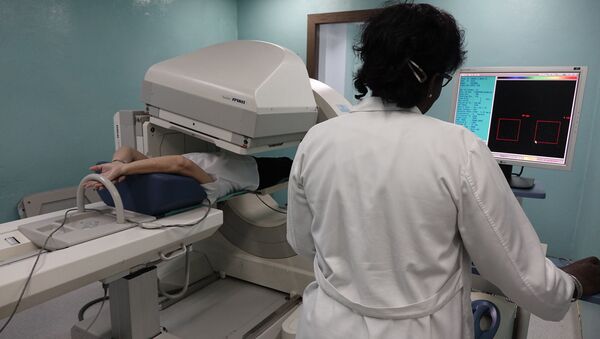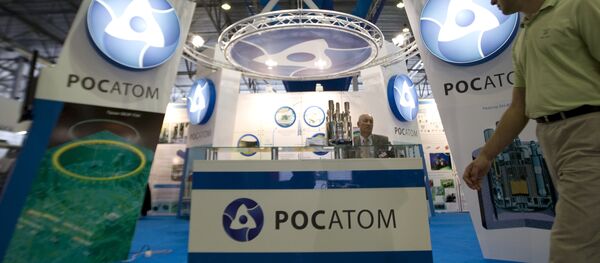Sputnik discussed the achievements and prospects of nuclear medicine with Natalia Epstein, Head of the pharmaceutical centre for practical training and competencies of Obninsk Institute for Nuclear Power Engineering of NRNU MEPhI.
Sputnik: What exactly is nuclear medicine?
Natalia Epstein: Nuclear medicine is a multidisciplinary field at the interface of medicine, nuclear physics, chemistry, molecular biology and other sciences. It develops diagnostic and treatment methods using radioactive atoms (radionuclides).
The uniqueness of nuclear medicine methods lies in the fact that they allow you to diagnose functional abnormalities at the very early stages of the disease when the symptoms aren’t noticeable. This allows you to quickly detect and treat a large number of diseases, significantly reducing treatment expenses.
For diagnosis, radiopharmaceuticals (RFPs) containing short-lived radionuclides are used. Typically, these are gamma and positron-emitting radionuclides with relatively short half-lives. By observing their distribution in the human body with detecting equipment, we can get an image of the internal organs, as well as judge the vital activity of both the organ and a certain part of it.
Sputnik: What therapeutic tasks can it solve?
Natalia Epstein: The radionuclide therapy (RNT) technology is based on therapeutic radiopharmaceuticals. Once in a specific place in the body, they emit short-range radiation that destroys tissue. Thus, for example, tumour diseases are treated.
Sealed radionuclide sources can be placed directly inside or near the tumour, which also has a therapeutic effect (brachytherapy). Brachytherapy is particularly intensively used in prostate cancer treatment.
For some forms of malignant tumours, for example, distant metastases of differentiated thyroid cancer, radionuclide therapy is the only effective treatment. Radionuclide therapy is widely used in the treatment of metastases in the liver, lungs, kidney and prostate cancer.
Modern methods allow focusing radiation only on affected cells, without damaging healthy tissues. Generally, alpha-emitting nuclides are used to do this, since alpha particles, due to their short pathlength, create an extremely high exposure zone right in the required area.
Sputnik: Could you tell us about the principles of radionuclide diagnostics?
Natalia Epstein: Diagnostic methods are based on indicator compounds labelled with gamma-emitting radionuclides. Gamma quanta have a sufficient pathlength to visualize the indicator’s distribution in the body, which allows scanning individual organs and entire systems.
Radionuclide diagnosis is fundamentally different from X-ray and ultrasound methods, which record only the anatomical features of the organs. The ability to register functional changes that are far ahead of the anatomical ones makes nuclear medicine methods unique both in early disease detection and in case follow-up. In this case, a patient’s single radiation exposure is about 100 times less than during a conventional x-ray examination.
Nuclear medicine methods are an alternative to the so-called functional diagnostic methods (electrocardiography and electroencephalography), the electrical phenomena of which indirectly reflect blood flow and metabolism.
Nuclear medicine’s ability to directly display the blood flow, microcirculation and metabolism (including the volumetric one) of the myocardium and brain has sustained rapid progress in cardiology and neurology. Radiopharmaceuticals make it possible to obtain images of places with an abnormal metabolism, which allows visualizing tumours, inflammations or areas of thrombosis.
In recent years, the so-called “theranostics” methods have been developed: using radiopharmaceuticals capable of performing both therapeutic and diagnostic tasks.
Sputnik: What are the scientific challenges for nuclear medicine development?
Natalia Epstein spoke at the IV International Symposium “Engineering and Physical Technologies of Biomedicine,” which took place at Obninsk Institute for Nuclear Power Engineering of NRNU MEPhI from 26 to 30 October.


